
 |
|
|
 |
| GETTING HERE | WHERE TO STAY | TRAFFIC | CAFES & BARS | WAY OF LIFE | WHAT'S ON | NIGHTLIFE | SHOPPING
|
SRPSKI |
 |
|

If it were possible to get a feel for the whole of Belgrade by strolling down one single street, that would be Kralja Petra St, one of the oldest in the city. Its route, linking the banks of the Sava and the Danube rivers, was charted already in the 1st century, in the days of the Roman Empire, when Belgrade was still called Singidunum. The forum, basilica, and baths were all on this street and it was the social hub of the city. The three major religions in Belgrade, Christianity, Judaism and Islam, all
have their special places here: Kralja Petra St is home to the Patriarchal See and the Cathedral of the Serbian Orthodox Church, the Jewish Community and the only mosque in Belgrade (some 20m from the corner with Jevremova Street). The very first bookshop, pharmacy, and hotel in Belgrade were opened on this street and this is where the first billiard table in Belgrade was installed. Furthermore, Kralja Petra St is a genuine outdoor exhibition of Belgrade architecture. There is probably no other street in
Europe that provides such an amazing assortment of different architectural styles - Baroque, Academic, Secessionist, Art Deco, Modernist, Oriental styles... along a stretch of a single kilometre. All this is spiced with a “Belgrade” style: buildings under state protection whose graceful façades are bedecked with AC units, torn posters, vinyl window frames and love graffiti.

As the most important commercial street, Kralja Petra St was the first to be given modern paving instead of the old Turkish cobblestones. There are many designer shops, artisan’s shops, cafés and restaurants lining the street, and the old and the new fit neatly together. We suggest that you start the stroll at Kosančićev Venac, situated on top of the high ground overlooking the Sava Quay. It was around this street, paved with Turkish cobblestones, just beyond the fortress walls, that Serbs were allowed to
settle in times of Ottoman rule.
|
|

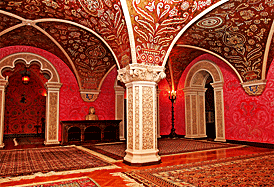

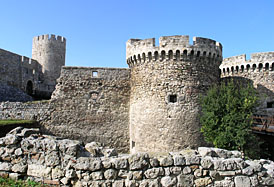

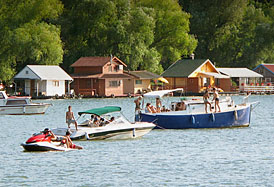

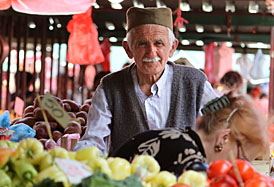

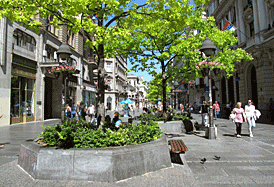

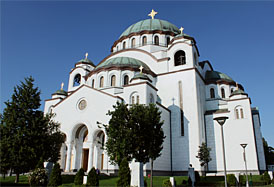





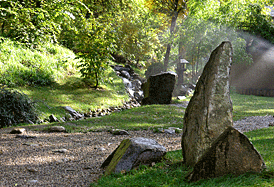

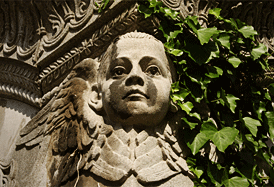
| |

King Petar I Karađorđević (1844-1921)
who gave his name to this street, was one of the most beloved Serbian rulers, affectionately called Uncle Peter by his people. He also lent his name to a street in central Paris (Avenue Pierre 1er de Serbie). He was born in Belgrade. When the House of Obrenović was restored to the Serbian throne in 1858, he went into exile with his family. Prince Petar spent much of his exile in France, where he completed military academy Saint-Cyr, enlisted into the French Foreign Legion under the name of Pierre Kara, and
served with distinction in the Franco-Prussian war, when he got wounded. In 1875, he took part in Bosnia and Herzegovina uprising against the Ottoman Empire. Years later, one town was named after the nom de guerre he had used in the uprising - Mrkonjić Town. Two more towns in the former Yugoslavia were named after him: Petrovac in Montenegro and Petrovgrad (present Zrenjanin). In 1903, following assassination of the last king of the House of Obrenović - Aleksandar, in a military coup d’état, the Serbian
Parliament elected him as the new King and he returned to Serbia after 45 years of exile. He was crowned in autumn next year. His crown was modest, it was made of the bronze from the cannon his grandfather Karađorđe had used in the First Serbian Uprising against the Ottoman Empire. Under King Petar, Serbia was victorious in the Balkan Wars, when medieval Serbian lands in Kosovo and Metohija were liberated. These victories won him enormous popularity and people called him Peter the Liberator. His health was
deteriorating, so he assigned his regal prerogatives to his son Aleksandar, just before the outbreak of the World War I. In 1914, Serbia suffered heavy losses in the battles against the invading Austro-Hungarian forces, but also achieved the first major allied victory. The King, old and ailing, would occasionally visit the trenches on the front-line to boost the morale of his troops. In late 1915, Serbia was invaded by joint forces of Germany, Austro-Hungary and Bulgaria. Rather than surrender, the King led
his army and people in retreat from Prizren to Greece through bitterly cold and hostile Albanian mountains. The famine, cold and enemy attacks claimed more than 100.000 lives during the retreat. The crown remain buried in the grounds of the School of Theology in Prizren, to await the return of the King to the Serbian lands. After the triumphant return of the Serbian army in 1918, King Petar was proclaimed King of the newly established state: Kingdom of Serbs, Croats and Slovenes (later Kingdom of
Yugoslavia). His tomb lies in the church he had built, the Church of St. George at Oplenac.
*Note:
When you visit churches and other religious buildings, you are expected to behave respectfully and speak quietly. You can enter even during church service, but try not to interrupt it or draw attention to yourself. You are not allowed to enter wearing shorts, flip-flops, mini skirt, with your belly exposed... Women are not allowed in the altar area behind the iconostasis. Taking photos with permission only.
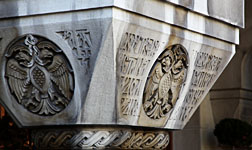 |
|
|
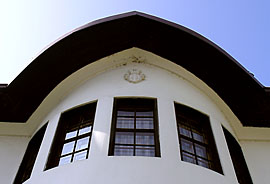 |
Today it is home to artists’ studios, bars, the Office of the Provost of the Arts Academy and remains of the National Library destroyed in German bombing of 1941. During the bombing, all books in the Library were turned to ashes, including around 1400 Serbian manuscripts, scrolls and maps, royal, imperial and church documents, almost everything that was written between 12th and 17th centuries.
Kralja Petra St begins at the School of Icon & Fresco Painting and Calligraphy. The School of Applied Arts is at number 4 and directly above (the street climbs uphill at this point) is Princess Ljubica’s Residence, once home to royal family Obrenović, built by Prince Miloš in 1831. Here is where Miloš’ sons and rulers of Serbia - Milan and Mihajlo were raised.
|
Prince Miloš himself lived away from his family as he was not on best terms with his wife, the Princess, ever since she had killed his mistress. Today, the Residence features a permanent exhibition of the 19th century Belgrade interiors in Classical, Biedermeier, Baroque and Oriental styles (Open: Tue-Wed, Fri-Sat. 10-17, Thu. 12-20, Sun. 10-14). Across the street is the Patriarchal See of the Serbian Orthodox Church, a large building which has as many rooms as
there are days in a year. It houses the library and museum of the Serbian Orthodox Church, where you can see the cloak worn by Prince Lazar, who led the Serbian army in Kosovo Battle against the Ottoman Empire in 1389. (Open: Mon-Fri 9-15, Sat. 9-12, Sun. 11-13).

As you cross the intersection with Kneza Sime Markovića St, you will come upon the main church of the city, the Cathedral of St. Michael the Archangel, which faces the main entrance into the Patriarchal See. The church in late baroque style was finished in 1845, built on the site where earlier orthodox churches were looted and burned down. Here is where Miloš Obrenović was anointed as Prince of Serbia, and Milan Obrenović and Petar I Karađorđević were crowned as Kings... Here is where a grief-stricken widow
tried to assassinate King Milan. The church is the resting place of Prince Miloš Obrenović and his sons, as well as a Vuk Karadžić and Dositej Obradović, protagonists of Serbian cultural renaissance.*
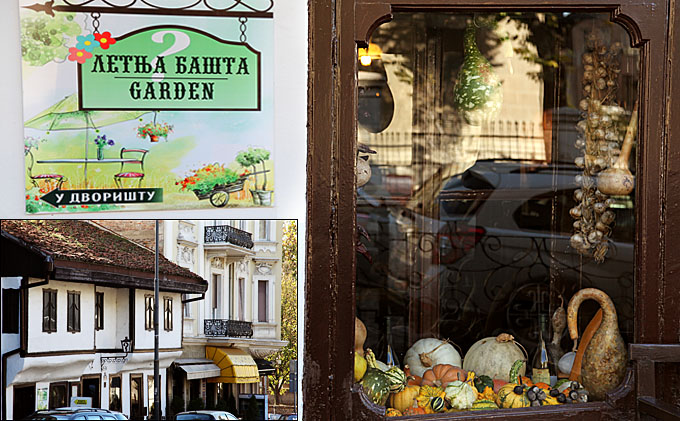
On the other side of the intersection, where once stood the first bookshop in Belgrade, there is men’s boutique Valter. An original gift for any glamour boy abroad would be a stylized version of the Serbian cap - šajkača. Just a little bit further, on the same side of the street, is Belgrade’s oldest kafana which opened in 1826 in a house built by Greek
masons in 1823. It is called “?” - The Question Mark.
In early 19 century all houses in the neighbourhood looked pretty much the same; they were whitewashed, and consisted of a ground floor and possibly the first floor. It is worth popping in for a plum rakia or local beer to see the authentic 19th century ambiance.
Just behind the Cathedral is King Petar I Primary School, a building from 1906, designed by Jelisaveta Načić, the first lady architect in Serbia. Its gym served as a studio to Ivan Meštrović when he was sculpting The Victor - the symbol of the city. In 1932, in the country of future champions of the world, it was the venue for the first basketball game ever played in Belgrade. Incidentally, the first football ball was brought to Serbia in 1896
by Hugo Buli, a younger brother to the owner of the first department store, located a few steps up the hill, at No 16 Kralja Petra |
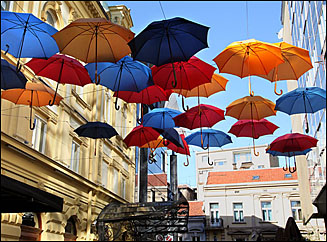 |
|
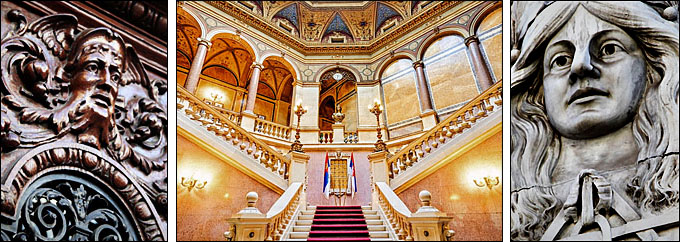
St. The building in the Neo-renaissance Academic style at the corner with Cara Lazara St has splendid interiors - it is the National Bank of Serbia. It stands on the site of a humble old house where one of the most famous Serbian playwrights, Branislav Nušić, was born. The visitor centre is open Mon-Fri. 10-16, and the entrance is free. At No 16 you will see the first department store in the city, with glass façade from 1907. At the top of the hill is intersection with pedestrian Kneza Mihaila St, from
which point the street slants downhill.
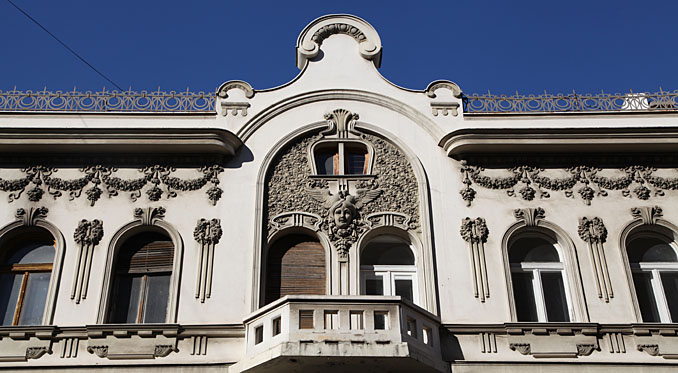
To the left, the highlights include a large hole, 10 year old, surrounded by a construction fence. This is the site of a future shopping mall, whose location, we are told, was “carefully chosen” - smack between the fortress and the pedestrian zone, without proper access by car. We are assured that its design will fit just nicely into the old urban core. Laymen may be forgiven for not understanding how a glass cube of 10 floors will fit into the surrounding buildings that on an average do not exceed 5
floors. On the other hand this could be a cunning plan on part of the city planners to introduce a 21st century exhibit to our outdoor exhibition of different architectural styles. |
The hole is succeeded by two lovely old buildings. If you take a good look at the façade of the first building, badly plastered with posters, you will see that it has an engraving of a lyre and a heart on its doors, a telltale sign that its owner was a Sephardi Jew.
For hundreds of years during the Ottoman and Austro-Hungarian rule, Jews lived in the Jewish Quarter. It was only when the Serbian Constitution was proclaimed in 1888, after the departure of the Ottomans, that Jews were granted equal civil rights, and then they began to build their houses among Serbs.
The neighbouring building, the one with green tiles, houses Leila records shop, a real gem for lovers of good sound and coffee.
Diagonally from Leila, on the other side of the intersection, you will see Aero Club building designed in Art Deco style.
Its doors are open so you can walk inside and see the entranceway and the marvellous stained glass window depicting Dedalus and Icarus. If you get sweet cravings, take the staircase to the first floor, where you will find the club restaurant. Try the delicious krempita mille-feuille, and enjoy the splendid interiors.
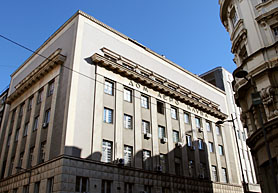 |
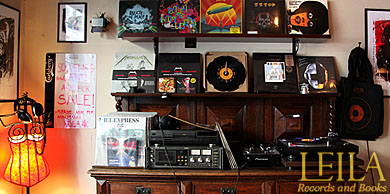
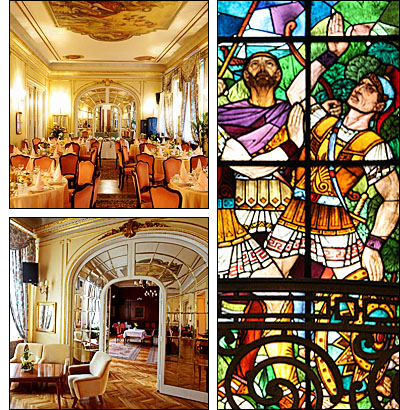 |
Check availability before dropping in because they often host private events. Aero Club, Open: Mon-Sun. 11-23, Telephone booking: 2626-077. If you continue downhill along Kralja Petra St, to the right you will see the oldest hotel in Belgrade - Royal (2*) which has been operating since 1885.
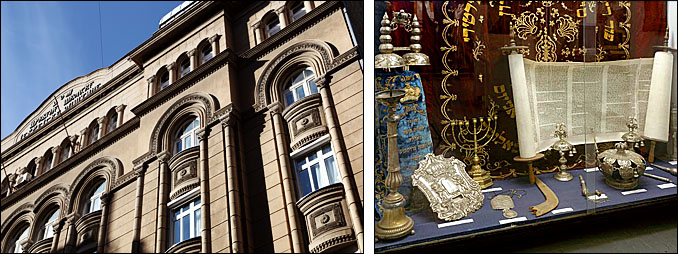
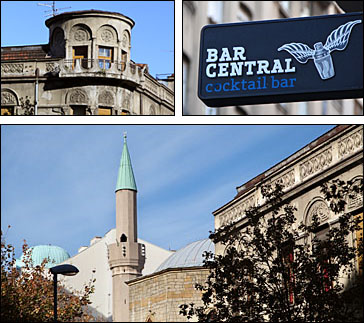 |
Across the street is the building of the Jewish Community which houses Jewish Historical Museum whose exhibits cover the entire area of the former Yugoslavia (Open: Mon-Fri. 10-14). Further down from the Jewish Community building is a chill place to sit back and relax - the garden of Smokvica, a popular café bar & restaurant. Do not be put off by the run-down façade if you want to go inside, the interior is quite pleasant, with its shabby chic cosiness. If you look
to the left at the intersection just after Smokvica, you will see Bayrakli Mosque, the only remaining mosque of about a hundred that existed during the Ottoman rule. If you happen to be passing during Ramadan Bayram, you can join the feast prepared by the hosts in the open. If you walk further downhill, you will reach Strahinjića Bana St, famous for its cafés. We suggest that you turn right and continue along this street as it will take you directly to Skadarska street, paved with
Turkish cobblestones and lined with traditional kafanas. |
|
























